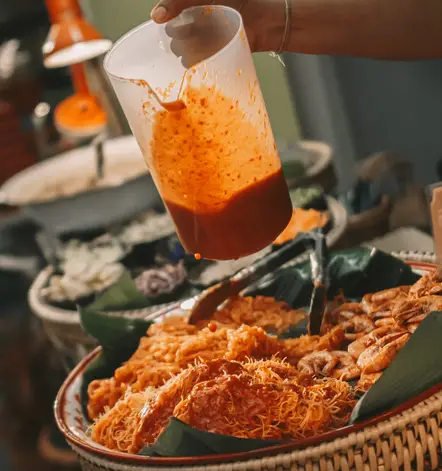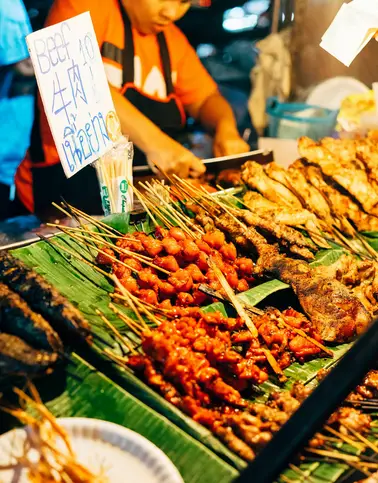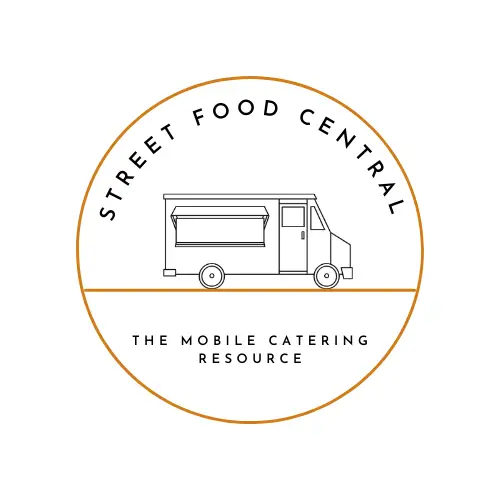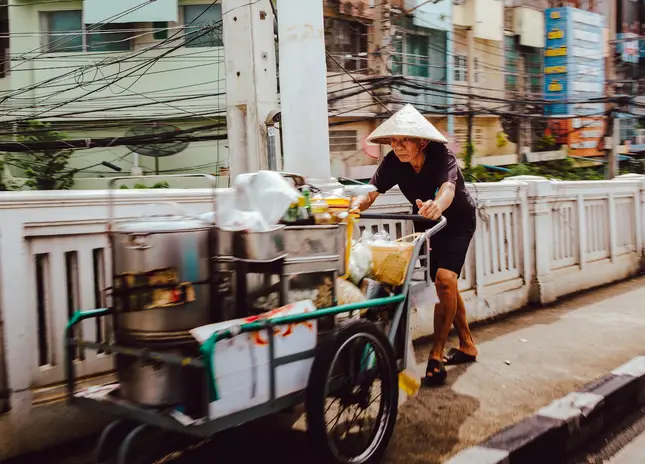Thailand, a country known for its vibrant flavors, is a paradise for food enthusiasts. However, for those with celiac disease or gluten intolerance, navigating the bustling street food scene in Thailand can be challenging. This guide aims to enlighten gluten-sensitive travelers about the safe choices and hidden dangers of Thai street food.
Understanding Gluten in Thai Street Food: Gluten is a protein found in wheat, barley, and rye. In Thai street food, it can lurk in places, such as soy sauce, certain noodle dishes, and even in sauces and gravies thickened with wheat flour.
Safe Gluten-Free Thai Street Foods
- Som Tam (Green Papaya Salad): This refreshing salad is a mix of shredded green papaya, carrots, tomatoes, and peanuts. It’s usually safe, but ensure that no soy sauce or gluten-containing fish sauce is used.
- Gai Yang (Grilled Chicken): Often marinated in a mixture of spices and coconut milk, Gai Yang is a delicious and safe option.
- Yam Talay (Seafood Salad): A zesty salad with mixed seafood, herbs, and lime juice. Check for no added soy sauce.
- Larb (Meat Salad): Made with minced meat, herbs, and lime, Larb is typically gluten-free but verify that no wheat-based products are used in the dressing.
- Tom Yum Goong (Spicy Shrimp Soup): A flavorful soup with shrimp, lemongrass, and herbs. Ensure that the broth is made without wheat-based products.

Gluten-Free Thai Desserts
- Mango Sticky Rice (Khao Niew Mamuang): A classic Thai dessert made from glutinous rice (which is gluten-free), fresh mango, and coconut milk.
- Coconut Milk Pudding (Khanom Thuai): A sweet pudding made with coconut milk and rice flour, often served in small clay pots.
- Sweet Sticky Rice with Banana (Khao Tom Mad): Sticky rice mixed with coconut milk and sugar, wrapped around a banana, and steamed in banana leaves.
Foods to Avoid for Gluten Intolerance
- Pad Thai: Often contains soy sauce and sometimes wheat in the noodles. You can never be sure what ingredients are in more complicated dishes.
- Satay Sauces: Some may contain gluten as a thickener.
- Spring Rolls: Usually wrapped in a wheat flour-based wrapper.
- Noodle Soups: Many Thai noodles are made from wheat, so it’s safer to avoid unless clearly stated otherwise.
- Sauces and Gravies: These can be thickened with wheat flour or contain soy sauce.
Hidden Dangers
- Cross-Contamination: Street food vendors often use the same cooking surfaces and utensils for different dishes, posing a risk of cross-contamination. If you have a severe gluten allergy, it may be best avoiding street food altogether in foreign countries such as Thailand.
- Soy Sauce: A common ingredient in many Thai dishes, traditional soy sauce contains wheat. Always ask if dishes are made with wheat-free soy sauce.
- Modified Food Starch: In sauces and soups, this can be a hidden source of gluten.
Tips for a Gluten-Free Street Food Experience
- Communication is Key: Learn a few phrases in Thai to communicate your dietary needs. Street food vendors may have the best intentions, but simply not understand what you are talking about.
- Research Ahead: Identify gluten-free friendly street food vendors or dishes before your trip.
- Stay Informed: Use gluten-free apps or guides specific to Thai cuisine for assistance.

Useful Thai Phrases for Communicating Gluten Intolerance
- “Chan/pom mai kin glu-tin” (ฉัน/ผม ไม่ กิน กลูเต็น): I do not eat gluten.
- “Arai mi glu-tin bang?” (อะไรมีกลูเต็นบ้าง?): What contains gluten?
- “Mai sai sauce see-iw” (ไม่ใส่ซอสถั่วเหลือง): Don’t use soy sauce.
- “Mai sai nom paeng” (ไม่ใส่น้ำแป้ง): Please don’t use flour (in sauces or to thicken).
With careful consideration and a bit of planning, enjoying Thai street food can be a delightful experience for those with gluten intolerance. Half of the battle is knowing what to choose and what to avoid in advance.

